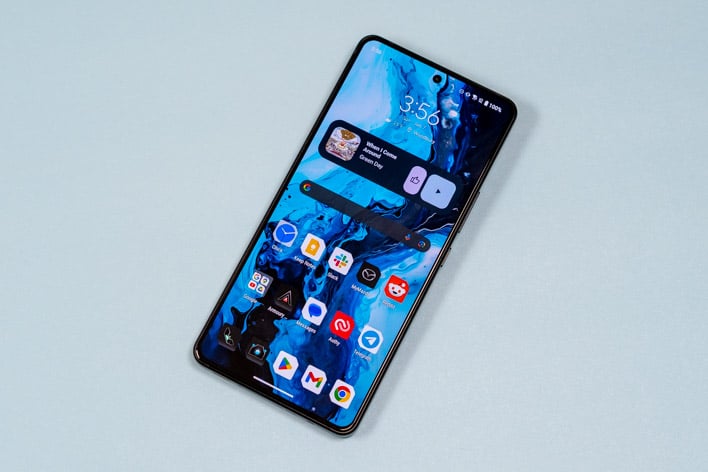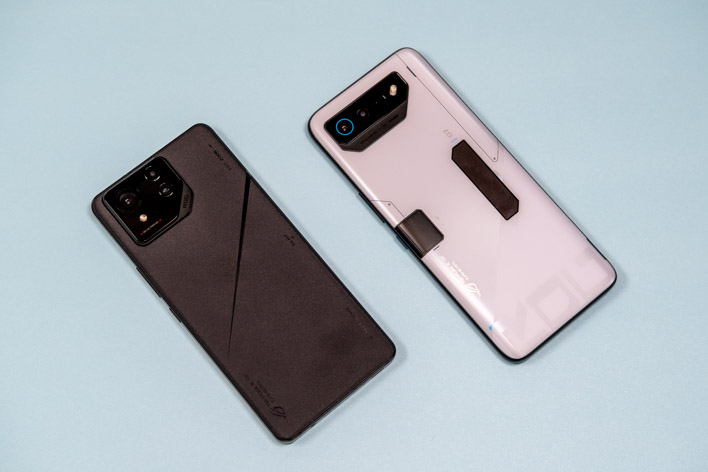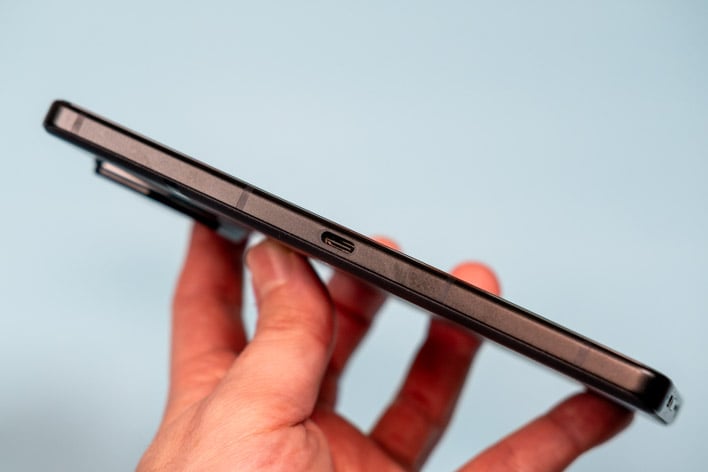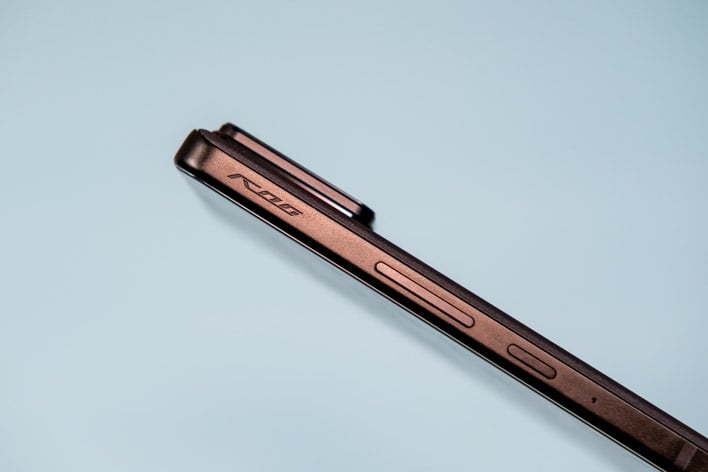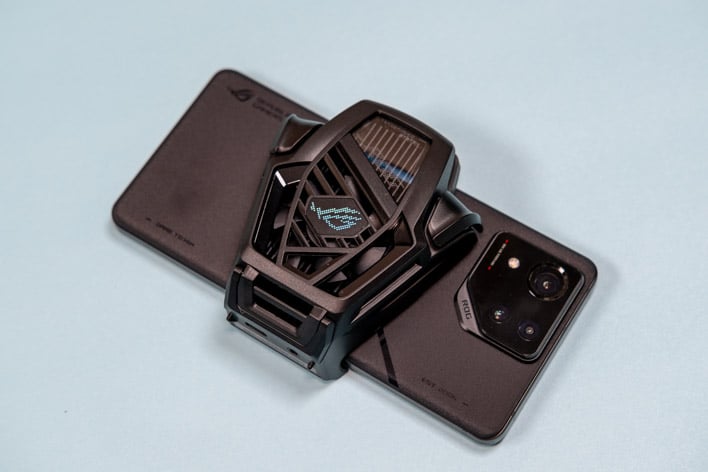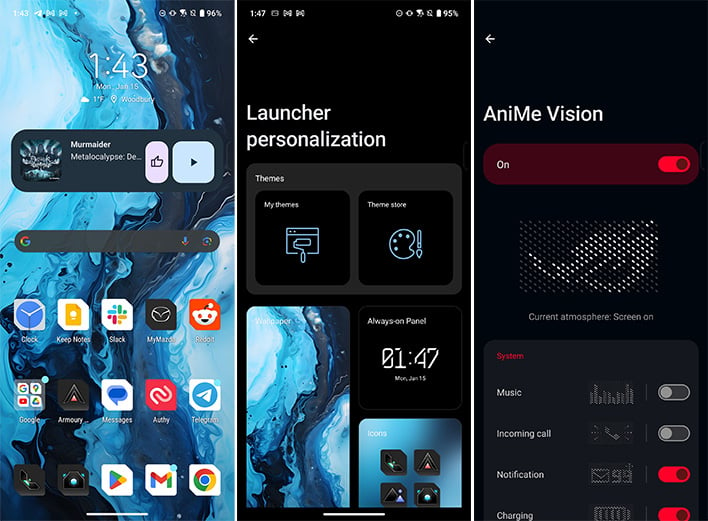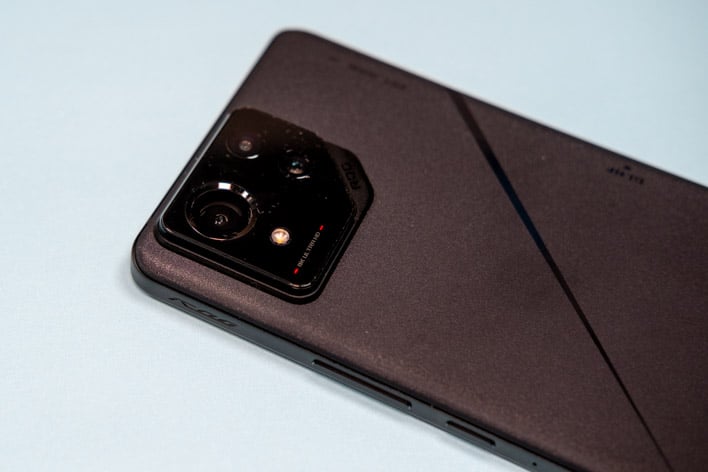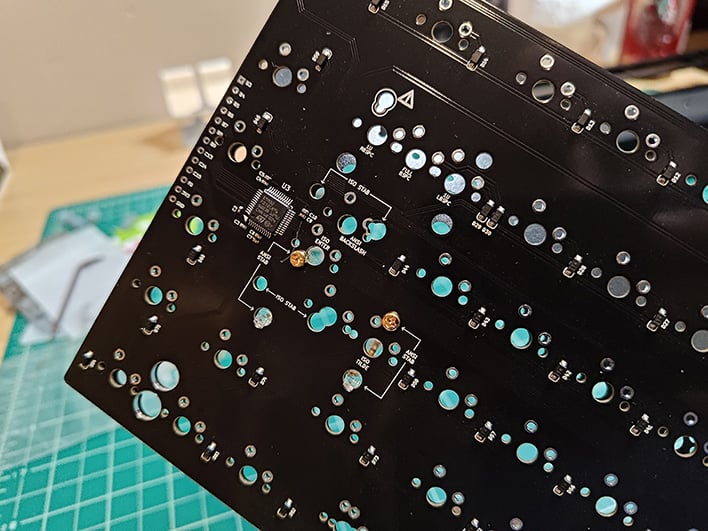Asus ROG Phone 8 Pro Review: Snapdragon 8 Gen 3 For The Win
The Asus ROG Phone 8 Pro Is a Gaming Phone In Disguise
| Asus ROG Phone 8 Pro: Starting at $1,199.99 The Asus ROG Phone 8 Pro might not look the part, but it's the most powerful gaming phone on the market currently, powered by Qualcomm Snapdragon 8 Gen 3.
|
|||

|

 |
||
The ROG Phone 8 Pro packs the best compute subsystem of any Android phone on the market, with a Snapdragon 8 Gen 3 SoC, a beefy 5,500mAh battery, and up to 24GB of RAM. At the same time, it looks more mature, refined and understated, which is a welcome departure from the bombastic "gamer" vibe of previous models. But even for serious mobile gamers, the ROG Phone 8 Pro is an expensive a proposition. So let's dig in and see what it's made of...
Asus ROG Phone 8 Pro Features and Specs
| Processor | Snapdragon 8 Gen 3 |
| Display | 6.78-inch 1080 x 2400 LPTO OLED @ 165Hz |
| Memory | 16GB / 24GB (Pro-only) |
| Storage | 256GB / 512GB (Pro-only) / 1TB (Pro-only) |
| Rear-Facing Cameras | 50MP 1/1.56” f/1.9 primary (gimbal), 13MP f/2.2 UW, 32MP f/2.2 3x Telephoto (OIS) |
| Front-Facing Cameras | 32MP (8MP output) |
| Video Recording | Up to 8K @ 24 fps |
| Battery | 5,500mAh, 65W charging, 15W wireless charging |
| OS | Android 14 |
| Dimensions | 163.8 x 76.8 x 8.9mm, IP68 |
| Weight | 225g |
| Connectivity | Wi-Fi 7, Bluetooth 5.3, NFC, USB-C (2x), LTE, 5G (sub-6GHz) |
| Colors | ROG Phone 8: Gray and Black ROG Phone 8 Pro: Black |
| Pricing | ROG Phone 8: $1,099.99 ROG Phone 8 Pro: Starting at $1,199 |
The Asus ROG Phone 8 Pro has a professional look that you might choose to describe as "boring," if you're a fan of gamer ostentation. All the oversized text printing, faux armor patterns, and vents from older ROG phones are gone, replaced by a simple matte black body of aluminum and glass. The only visual embellishments are a racing stripe of glossy finish on the glass back and the odd pentagonal camera bump.
Right: ROG Phone 8 Pro, Left: ROG Phone 7 Ultimate
There's more going on here than meets the eye—this is still a gaming phone, after all. The left edge of the phone has a second USB-C port, which you can use to charge the phone comfortably while you game, but it's mainly there to attach accessories like the AeroActive cooling fan (more on that later) and an upcoming controller add-on. The bottom edge houses the primary USB-C port, as well as the rare and elusive headphone jack. Nice to see Asus hasn't left all its gamer sensibilities behind.
We've lost the front-facing speakers from previous ROG Phones, but this was a necessary concession to slim down the device. The 6.78-inch display now occupies almost the entire face of the phone, making it a full centimeter shorter than last year's phone with the same display size. The OLED itself is excellent. It's only 1080p, but it looks more than sharp enough even when compared to 1440p phones. The OLED also has impressive brightness, maxing out at 2500 nits in direct sunlight. It supports a 165Hz refresh rate, but it's an LTPO panel. Meaning it can dynamically adjust the refresh rate as low as 1Hz to save power. There's an optical fingerprint sensor under the display, and its performance is neither amazing nor disappointing.
Around back, the ROG Phone 8 Pro has a matte black panel of Gorilla Glass. There are no fun colors available, but the lighting effects should give you all the flashiness you want. The Pro phone doesn't have the RGB logo on the back, but you do get an array of 341 white LEDs hidden under the glass. You can activate this "AniMe Vision" panel in the Armory app. The lights change based on what you're doing, for instance showing the time or notifications when the phone is asleep. You can also have the lights activate when you're playing games or on a phone call. Or you can just leave them off, which is the default.
When holding the phone in landscape, your fingers will naturally fall on the top edge where Asus has placed the programmable shoulder buttons. They're very sensitive, requiring just a light tap to fire off a tap. You can tell the phone where to aim that virtual tap, so you can easily create a physical fire button in shooters or a jump button in fast-paced platformers. The buttons work, and they really up your game.
If two buttons aren't enough, the AeroActive cooling fan adds two more. Asus slimmed down the phone along with the phone this year, so that's two fewer buttons than last year's ROG cooling fan. We've got some testing of the fan on the next page, but suffice it to say, this is not a must-have accessory. Last year's fan had a direct air channel to the heatsink, but the ROG Phone 8 Pro is IP68 rated. That means no fan door, and therefore, Asus switched from convective cooling to conduction cooling.
Asus says it designed a conductive stack that pulls heat away from the SoC, and it seems to do its job. However, the body of the phone ends up surprisingly (maybe even dangerously) hot. The fan has also slimmed down with the phone. The fan is bundled with the higher-specced ROG 8 Pro, and it does keep the phone from getting quite as toasty—more on this in our benchmarks on the next page.
The Asus ROG Phone 8 Pro comes with a good selection of accessories; not just the cooling fan. You also get a snap on case, a pouch for the fan, a high-wattage USB-C cable, and a 65W power adapter. It's refreshing to see more than the phone and a USB cable in the box, which is all you get with most phones anymore.
Asus ROG Phone 8 Pro Software
It's not uncommon for phones to launch with old versions of Android, but the ROG Phone 8 Pro isn't one of them. It has Android 14 out of the box, and Asus promises Two years of OS updates (probably significantly delayed) and four years of security patches. That's nowhere near as generous as Samsung or Google, but it's better than Asus used to offer.The Asus version of Android is an acquired taste. The default ROG interface retains all the gamer aesthetics that the physical design has lost, but this is optional. Upon starting up the phone, you will be offered the option to use a stock Android UI or the ROG interface. We stuck with Asus' take on Android (for science). So, you'll notice some distinctive visual quirks like the octagonal app icons, smaller quick settings tiles, more detailed volume panel, and more. We also appreciate the option to individually enable and disable all these Asus-optimized options.
If you like to tinker with your phone, the ROG Phone 8 Pro is going to be a joy. It's overflowing with settings and features. Want to change the status bar icons, reduce display flicker at low brightness, or connect to multiple Wi-Fi networks? The ROG Phone 8 can do it all, provided you're willing to dig around in the settings.
Often, the gaming overlays on Android phones are of little use beyond hiding notifications, but Asus packs its "Game Genie" tool (no, not that one) with a ton of features. It handles the basics like silencing notifications and adjusting the display brightness, but that's just the start. You can also record gameplay clips, change the charging speed, change processor power, and even use AI to copy text from a game. This is one of the features that reminds you this phone is a serious gaming phone even if it doesn't look like one.
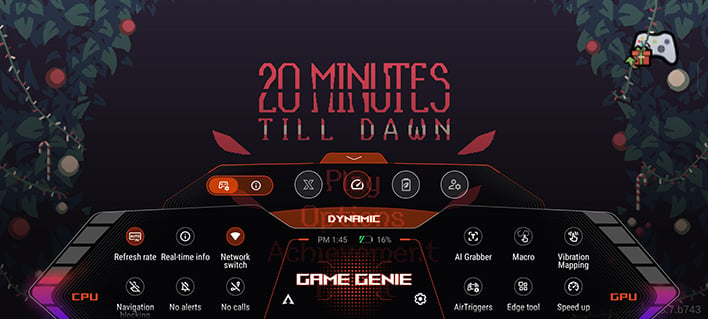
Most of the phone's gaming features are bundled in the Armory Crate app. The app has a system monitor, as well as settings for the performance mode, Game Genie, lighting, and gaming buttons. It also includes a list of all your installed games, as well as suggestions for additional titles. The app is a bit clunky, and the post-launch splash screen takes forever to go away, but it's nice to have all these features in one place.
With all that said, the software has its issues. We've been testing the ROG Phone 8 Pro over the course of a couple of weeks. The initial software build was very buggy, but it has been updated to address some of the issues. There are still some occasional app crashes, and it even rebooted on a few occasions.
Asus ROG Phone 8 Pro Cameras
Asus has not traditionally paid much attention to the imaging component of its gaming phones, but the company's new approach with the ROG Phone 8 includes an upgraded camera array. There are now three sensors, a 50MP primary, a 13MP ultrawide, and a 32MP 3x telephoto. Previous ROG Phones did not have a telephoto lens, which is usually larger and more expensive than alternatives like the near-useless macro camera on last year's ROG Phone 7.The hardware for the primary and ultrawide sensors appears unchanged versus last year, but we have been seeing better results. Captures are generally fast enough to avoid motion blur, provided you've got at least some light. The ISO ramps up in dim lighting, which does make images more grainy. That said, the ROG Phone 8 Pro images don't get as fuzzy as the ROG Phone 7's did. Asus' image processing does still tend to smudge fine details, though. The ROG Phone 8 won't be able to match a Pixel camera or even a high-end Samsung phone, but it's not going to botch as many shots as some older gaming-first devices.
The addition of a telephoto camera gives you the option to get closer to your subject without losing resolution. The aperture of this sensor is on the narrow side (f.2.4), so it won't work well in dim light. The ROG Phone 8 Pro will actually let you use that sensor whenever you want—most Android phones automatically swap to a cropped main sensor image when you zoom in poor light. The Asus phone sticks to the telephoto lens unless you zoom back out.
One issue we have noticed is that image processing varies noticeably between the cameras. So the same scene could have dramatically different color balance. In general, the ultrawide leans a bit cool and the telephoto warmer. It may not have all the fancy video features of a Pixel 8 Pro or Galaxy S23, but the video recording on this device is more than passable. It can even record 8K footage, which you probably can't even watch at full resolution.

